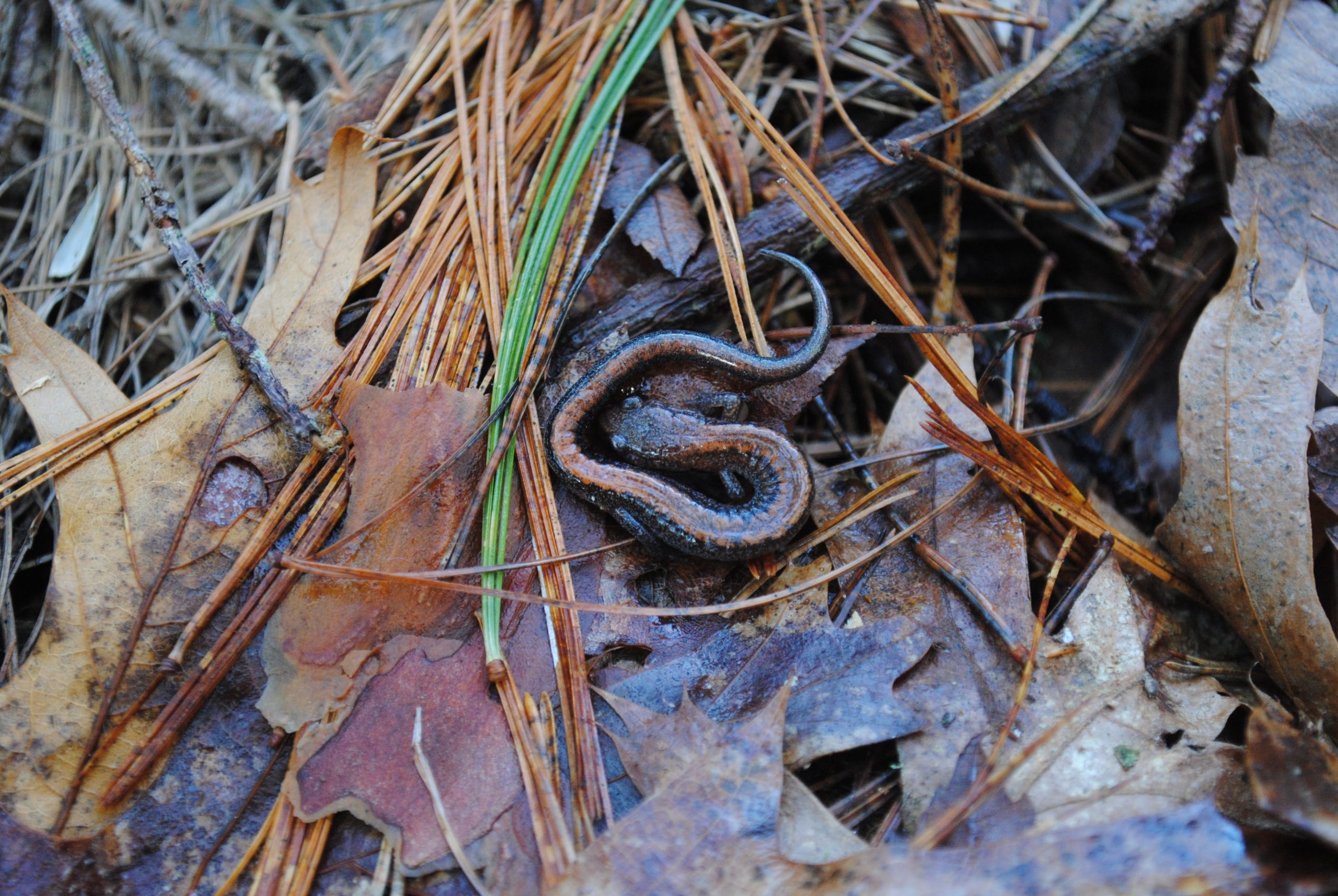On your next woodland walk this month, keep an eye out for these often overlooked clues that winter is on its way
Massachusetts is famous for its falls: explosively colorful maple trees, the smell of hot cider wafting from a roadside farm stand, and, as most birdwatchers will know, an influx of migratory birds making their way south for the winter months. But with most telltale signs of autumn happening at or above eye level, have you ever looked to the forest floor for clues that the seasons are changing?
Although many plants and animals begin slowing down and entering a state of dormancy in late fall, there are still a number of exciting natural wonders to look for in places you may not typically notice.
Here are our top five often overlooked signs of fall in Massachusetts.
Woolly Bears on the move
Isabella Tiger Moth caterpillars, known colloquially as ‘Woolly Bear’ caterpillars thanks to their cuddly-looking exterior, can be spotted shuffling along forest floors, backyards, and even sidewalks well into November and throughout the winter when the weather stays warm. A relatively hardy caterpillar, they’re quite different from other caterpillar species that spend colder months inside cozy cocoons.
Woolly Bears have a unique adaptation that allows them to stay active when the weather cools down: they create their own ‘antifreeze,’ or proteins that act very similarly. Because of this, they’ll stay active as long as they can until temperatures drop. When the time comes to cool down for the winter, they seek out piles of leaf litter to hunker down under for the harsh weeks or months ahead. Once established, they remain completely motionless, not moving even to eat or drink.
The proteins inside their body keep them from freezing, despite how they may appear on the outside. As temperatures rise, Woolly Bears break free from their frozen state and start shuffling around again through March when they finally create a cocoon. After about a month, they emerge in their final form: the Isabella Tiger Moth.
A surplus of salamanders

In October and November, salamanders will start looking for places to brumate, the amphibian and reptile version of hibernating. During this time, when temperatures aren’t too cold, you can find an increase of salamanders under decaying logs and rocks as they search for the perfect hibernaculum, or place to spend the winter.
The Eastern red-backed salamander is the most abundant salamander in Massachusetts, and possibly the most abundant vertebrate — animal with a spine — in the state. Around this time of year, Eastern red-backed salamanders will browse areas under rocks and logs in search of a place to spend the winter. When on a woodland walk in late fall or winter, be sure not to move logs once temperatures begin dipping close to freezing. You don’t want to disturb any salamanders that have already hunkered down for the winter.
Snakes seeking shelter

Like other ectothermic animals — animals that can’t regulate their body temperature — reptiles, including snakes and turtles, look for places to hide from freezing temperatures in the winter. One of the more active snakes in the northeast U.S. as the temperatures drop is the Eastern Garter snake.
Native to Massachusetts, the Eastern Garter snake begins searching for a place to establish a hibernaculum through October and into November if the temperatures stay mild. During this time, you may find them underneath wooden and metal boards or basking in the sun as they try to heat their bodies.
When they are ready to brumate, Eastern Garter snakes will look for burrows made by other animals or natural cavities in rocks or underground. If you do stumble upon a spot that could make a good snake hibernaculum, be careful — Eastern Garter snakes are known to brumate in groups of hundreds! These snuggly snakes do this to keep warm so they won’t freeze.
Seeds, seeds and more seeds

Don’t be fooled by flowering plants’ bright colors turning yellow and brown in the fall — many of them still have much to offer, even after the summer months. When October and November roll around, many plants retire their leaves and flowers in exchange for fruits and seeds, making fall a great time to explore the different adaptations plants use to ensure their next reproductive cycle will be successful.
An important factor in seed success is how effectively they can move away from their parent plant. Different plant species will produce different seeds that are adapted to disperse in their own unique ways. Some get carried by the wind on fluffy parachutes, like milkweed, some are spikey and perfect for latching onto animal fur, like Queen Anne’s lace, and some explode when touched, like jewelweed. Not to mention the brightly colored berries encapsulating seeds just asking to be eaten and brought elsewhere to grow.
Next time you find a plant on its last leg (or stem), see if you can find any signs of seeds. Most seeds plants produce in late fall stay dormant for the winter and sprout in the spring. When out seed hunting, look for any unique adaptations that will make them more successful at moving away from the parent plant and sprouting somewhere different in the spring.
Fruiting fungi

While mushroom hunting season in Massachusetts typically winds down in early November, now is still a great time to get outside and look for some fantastic fungi, especially with climate change bringing milder winters and longer stretches of moderate temperatures into late fall.
Did you know that mushrooms are really just a single part of a fungus? The mushrooms you see growing on trees, logs, and on the forest floor are fungi’s reproductive organs that allow them to release their spores into the air. These spores have everything a fungus needs to reproduce and spread, assuming they land in a place where that species can thrive.
If you want to dig a little deeper (literally) when looking for mushrooms, you can shuffle around areas with lots of decomposition of leaf litter in the forest. You’ll often be able to find the white, fuzzy mycelium of fungi, which is the part of the organism responsible for breaking down organic matter. Fungi decompose by secreting enzymes through their mycelium and then absorb the nutrients the organic matter releases during the process. Anything they don’t use gets left behind and continues to break down into soil, providing trees and other plants with nutrients to absorb through their roots. Decomposers like fungi are extremely important for the health of our planet; they are responsible for continuously recycling nutrients through ecosystems from the soil to the trees and back again.
___
Have you seen any of these signs of fall this season? Tag us on Facebook and Instagram with your favorite fall finds to let us know!





 Back to all
Back to all


